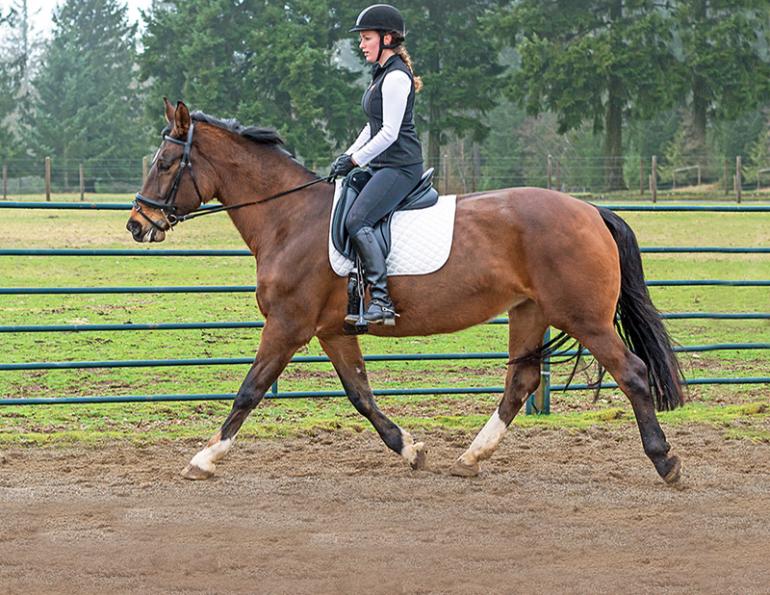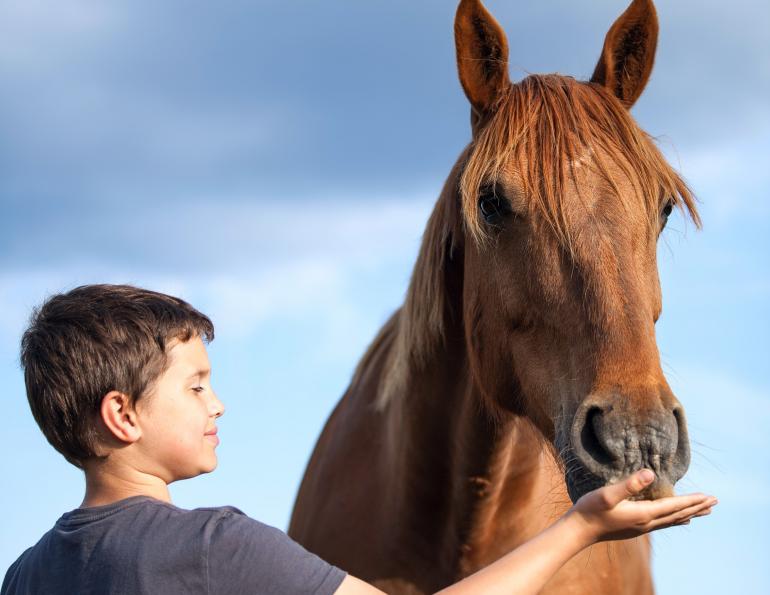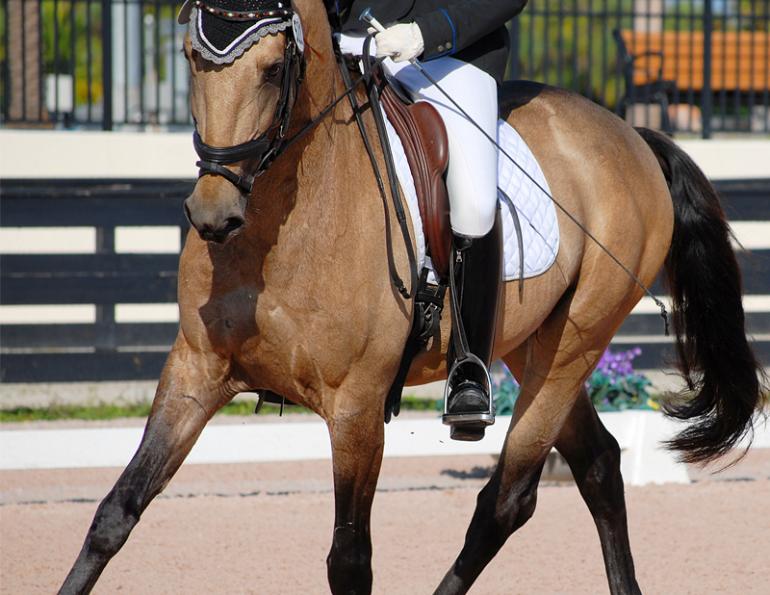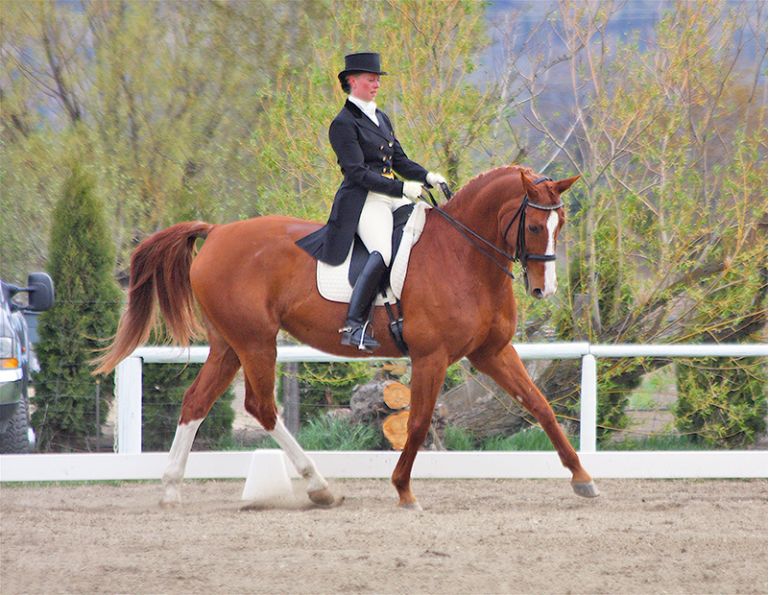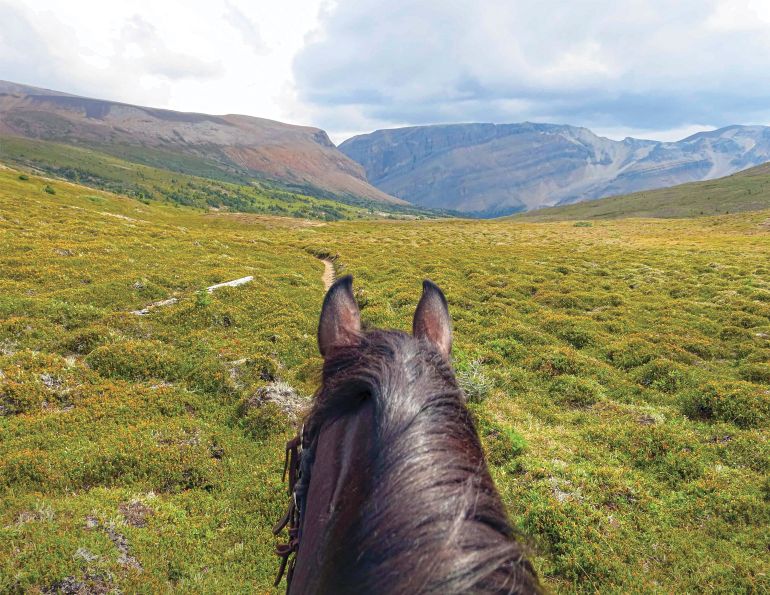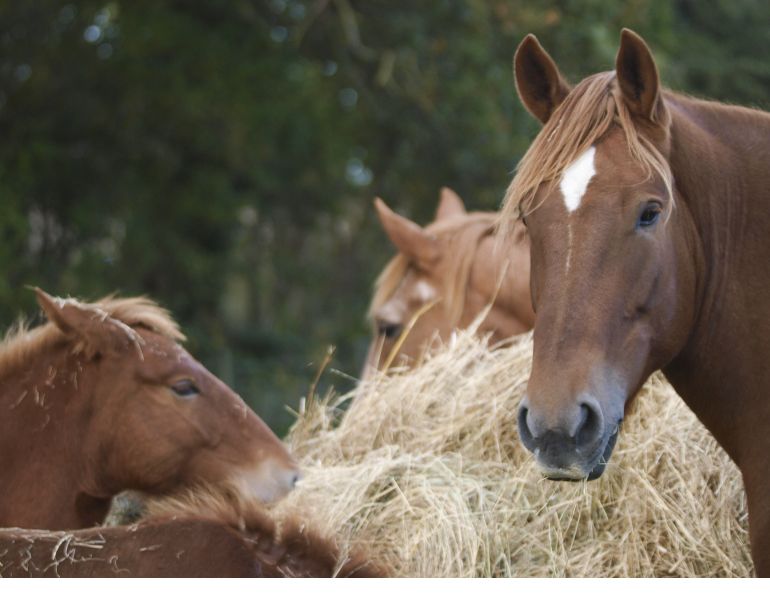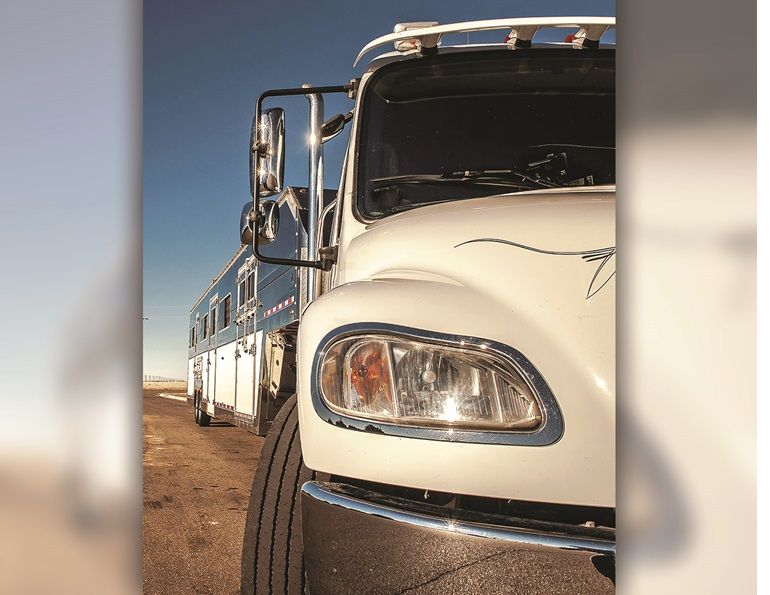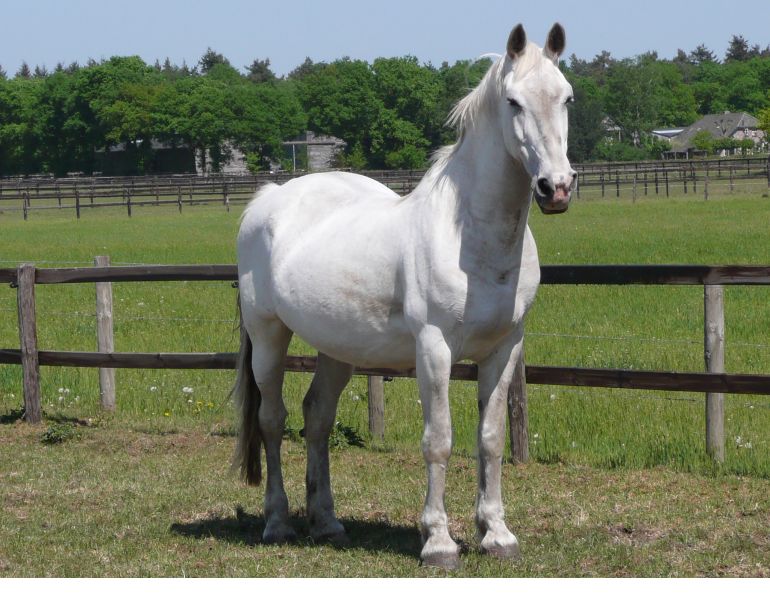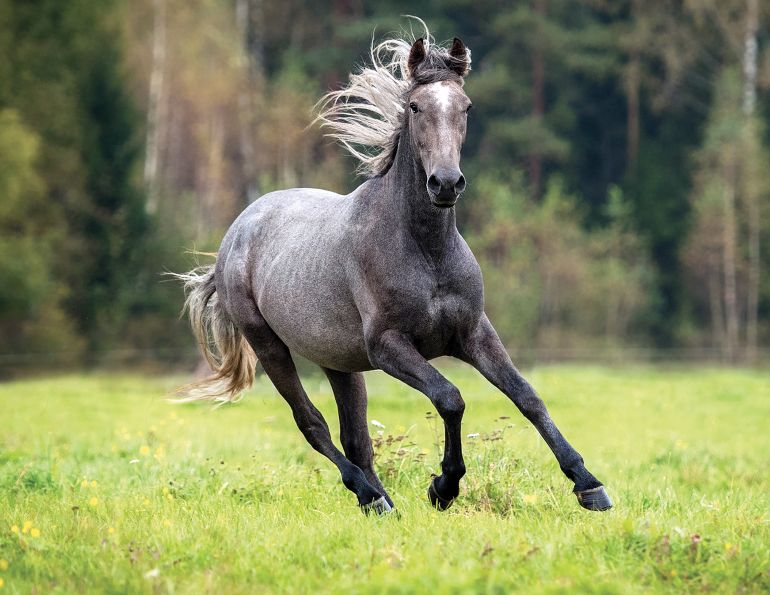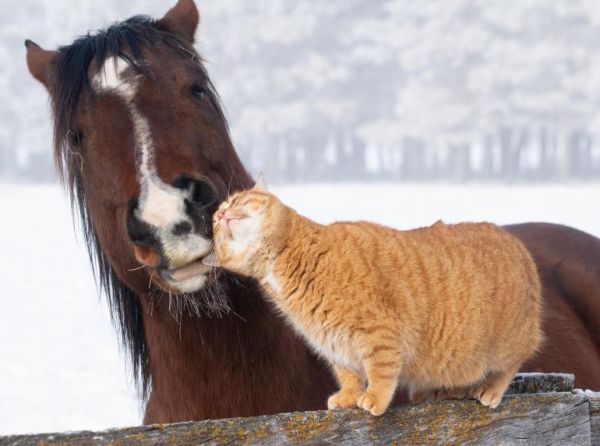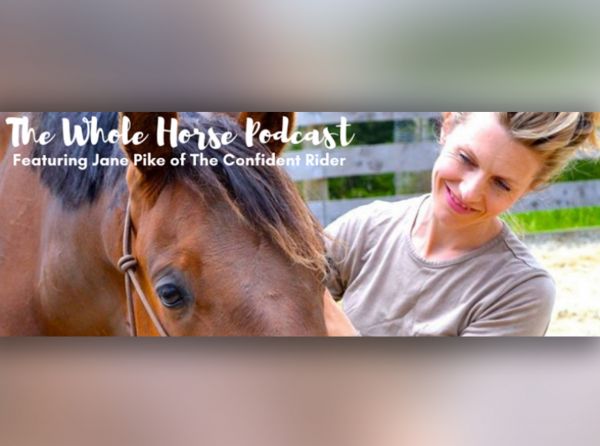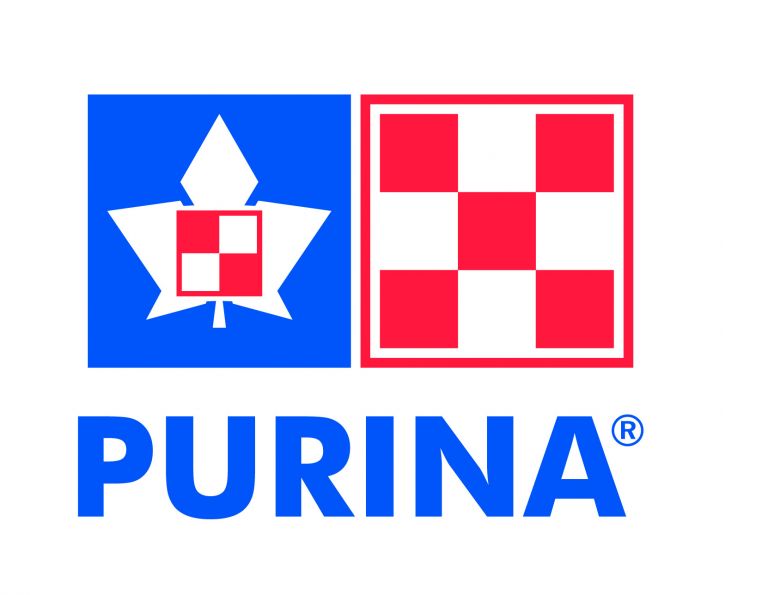Be Posture Perfect!
By Gina Allan and Barb Kopacek
Many people enjoy setting goals to help give focus and guidance to the year ahead. If we map out our desired goals appropriately, make them realistic and attainable, then initiate them with baby steps, there is a greater likelihood we will achieve success. When we write down our goals we are, in essence, making a commitment and a contract with ourselves. I challenge you to improve your overall physical posture and riding position to become the best rider you can be.
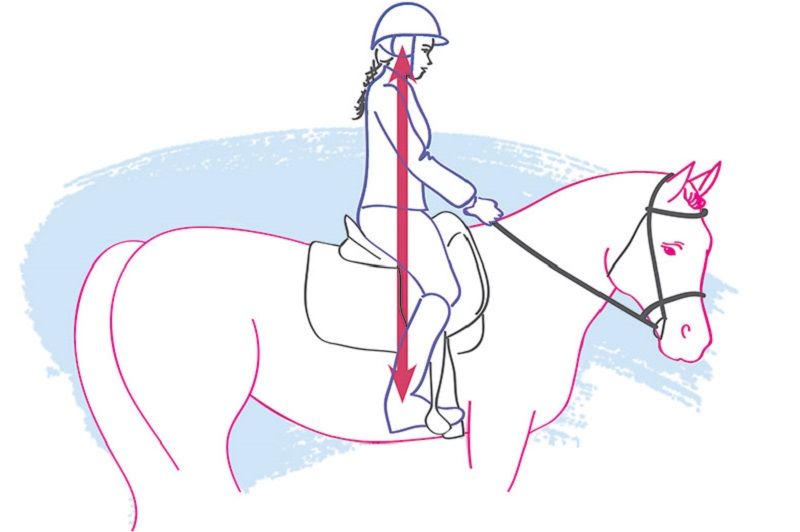
Can you commit ten minutes every ride to focus on your posture? Ten minutes of focus during a warm-up in walk, trot, or canter can help any rider significantly change and improve their riding position. There are many ways to successfully approach improving our physical performance when riding. Watching a video of yourself or using mirrors while you ride can be excellent tools for observing traits to change or improve. Again, take ten minutes of every ride to focus on your postural alignment. If you have access to mirrors when you ride, look at yourself from the side. Ensure you have the classic positional alignment in place – if you were to draw a line from your ear to your ankle, it would bisect the shoulder and hip. This line should be perpendicular to the ground.
Position Problem #1 – Legs that habitually swing forward.
If your lower legs are always swinging so far forward that you can see your toes in front of your knees, try standing up on your stirrups. Imagine they are like swings. Place the balls of your feet directly across the stirrup bar, just like in the two-point position. Reach the crown of your head skyward as if it is being pulled by a string like a puppet. Keep stretching lengthwise through your torso and, keeping your ankles directly underneath your hips, return to a seated position. If your legs swing forward as you sit down you may need to make an adjustment to your saddle, but more than likely you just need to practice keeping your lower legs and ankles back and underneath your seat. This is where your legs should be held and maintained during your entire ride. Simple adjustments like this can and ought to be made at any time throughout your ride if you feel you’ve fallen out of alignment. We call this resetting your position. Tight hip flexors and low back muscles, and weak glutes are often the result of this misalignment issue and result in the legs swinging too far forward. This can also create heaviness in the rider’s seat, which puts too much pressure on the horse’s back, and can cause discomfort or even acute pain, which reduces the horse’s ability to bring his hind legs underneath his hips. Whether or not you have experienced this problem in the past it is worth trying the following exercises to help release the hip flexors and increase strength in the glutes to give you that sought-after deep classical seat. The following dryland exercises are designed to help develop better muscle balance between the hip flexor, quadriceps, hamstring, and gluteal muscles.
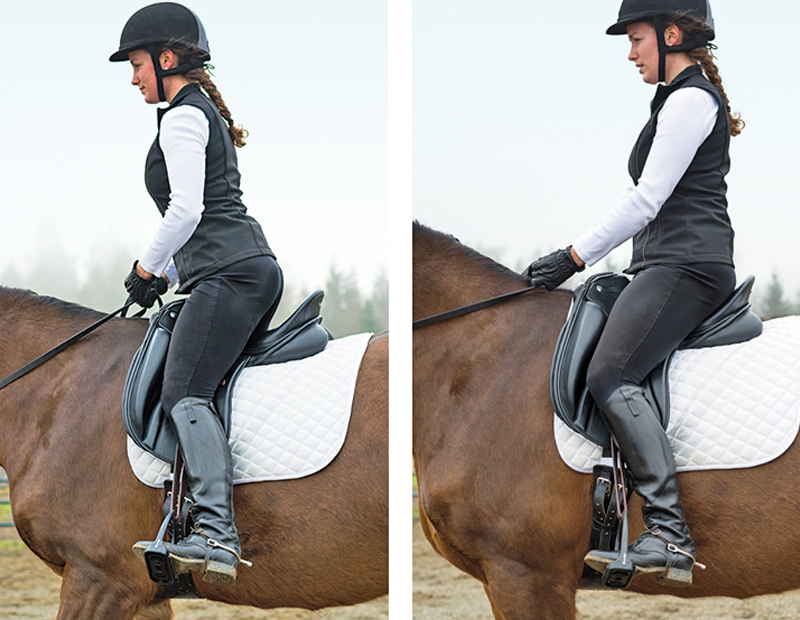
Exercise 1: Deep Lunge Stretch
Begin in a runner’s lunge with your right leg forward and your left leg stretched behind you. Ensure that your left knee is appropriately padded. Gradually lower your left knee to the floor, so that your right knee is aligned over your right ankle at a 90-degree angle. Extend your left leg behind you so the top of your foot is flat on the floor. Try to bring your hips forward to square them up. Lengthen through your torso by stretching skyward. Feel the stretch on the front of your hip. Hold 30 to 60 seconds. Repeat on the other side.
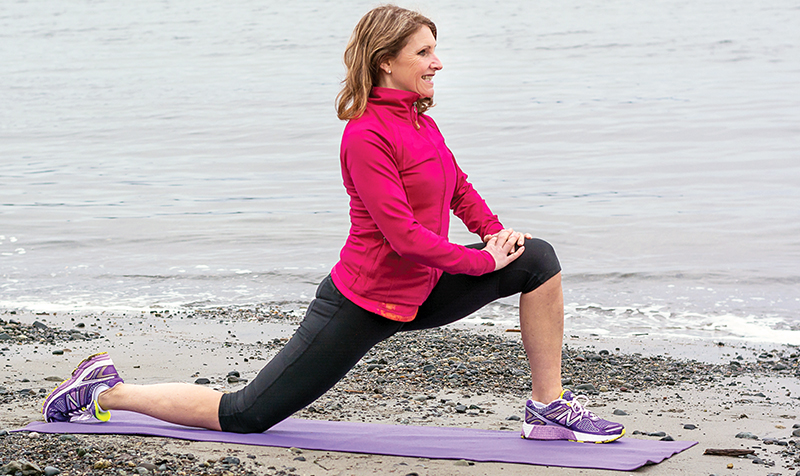
Exercise 2: Low Back Gluteal Stretch
Lie on the floor in Three-Point Touch position. Keeping your hips level, gently bring one and then the other knee to your chest. As you do so, widen your legs as if bringing them toward your underarms. Keep your torso long and your pelvis level and square along the floor. Squeeze your thighs in and hold for 30 to 60 seconds. Repeat ten times.
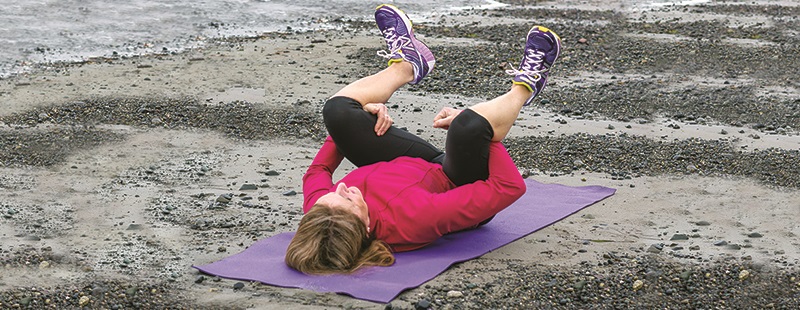
Exercise 3: Gluteal Squeeze
Sitting in good Three-Point Touch position in a chair or exercise ball, on the ground, or in your car, squeeze your gluteals together as if you’re holding a winning lottery ticket between your cheeks! Hold for two seconds and repeat 20 times. This exercise can be done often. Try it while you’re driving every time you come to a stoplight. Do 10 or 20 squeezes.
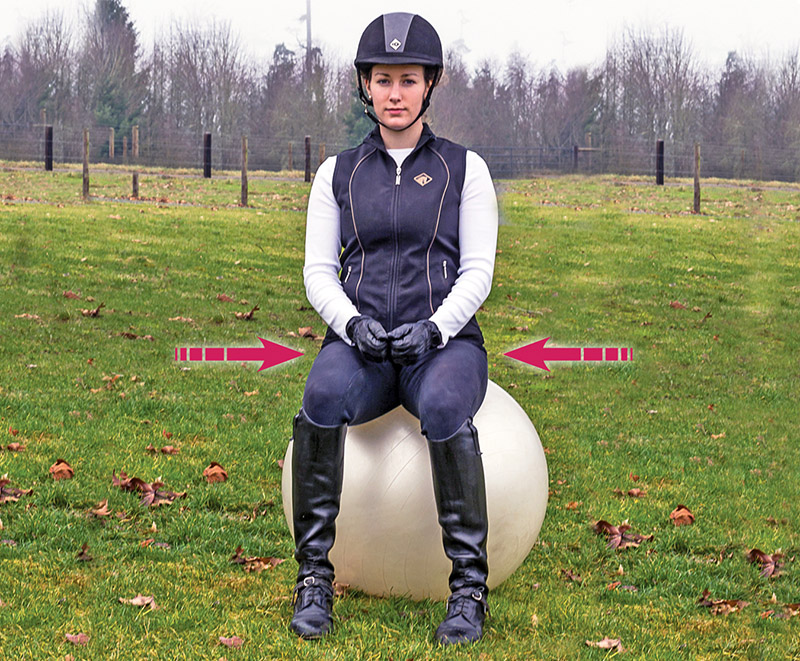
Exercise 4: Cobra or Spinal Extension
Lay prone on your stomach with your legs extended, your hands underneath your shoulders and your forearms on the floor. Contract your abdominals in an imperceptible pelvic tilt, and on your inhalation press your hands into the floor so that your upper body begins to lift, but your hips stay rooted to the floor. Be careful not to over-extend. Raise just a small amount to start with to ensure you are keeping your back properly aligned. Hold the stretch for a few seconds and return to the floor. Repeat three or four times.
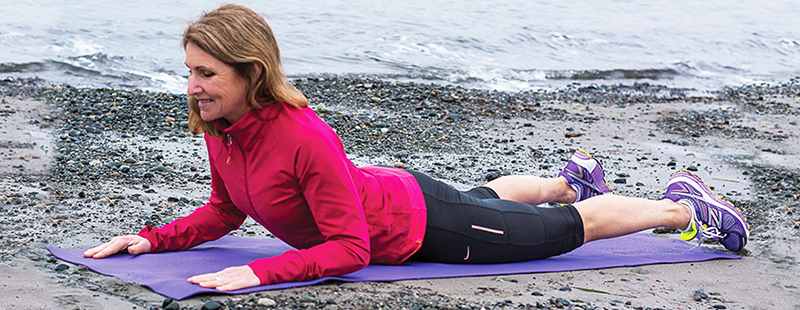
Position Problem #2 – Correct Alignment Ear-Shoulder-Hip
Now that we’ve worked on setting the legs and aligning the seat longitudinally, let’s go to the upper torso, rib cage, shoulders, neck, and head area. Like our Three-Point Touch, we always want to maintain correct alignment from the ear through the shoulder to the hip. However, if we are contracted in the front chest muscles there is likelihood that we will fold forward rounding our upper back. This position causes a lot of unwanted pressure on the vertebrae of the thoracic and lumbar spine. A forward rolling of the shoulder can cause shoulder impingement syndrome, as well as arm and neck issues. This Rounded Kyphotic position often correlates with a nervous rider. When a rider is tense or nervous the hip flexors will contract and the shoulders will roll forward. The torso will collapse in order to unconsciously protect the vital organs of the body. So, if a rider is nervous the first thing they have to acknowledge is whether or not they are riding a suitable mount.

If the horse makes the rider nervous there’s a likelihood that things could go wrong quickly. When the rider is in this contracted fetal/protective position (above), her breath will be shallow causing the hip flexors to contract, pulling the legs up from around the horse’s body. The horse will feel tension through the rider’s thighs and hips, and likely begin to think something is wrong. This in turn can cause a cyclical or negative feedback loop between horse and rider. This is the point where a rider must focus on breathing deeply… a four-count on the inhalation and a four-count on the exhalation. This focused, calm, rhythmic breathing will enable the diaphragm to descend and allow the rider’s hip flexors to relax and loosen.
Once the rider has achieved a rhythmic breathing pattern, she should focus on locating her seat bones. Sit squarely on the seat bones in good Three-Point Touch position ensuring shoulder blades are rolled back and down as if trying to put them into your back hip pockets. The shoulder blades should lay flat against the ribcage so they’re not poking out. If this posture is unattainable, then it’s quite likely the rider needs to do some stretching and strengthening exercises to correct these imbalances. By stretching the front of the chest and strengthening the back of the body, we can reestablish a balance of muscle to the front and back of the body. If you are unable to maintain square shoulders while seated upon your mount, perhaps you will find some of these stretches and exercises will improve your torso and shoulder position. These exercises are excellent for anyone to do on a regular basis, particularly if you work at a desk or computer for long periods of time. Try these stretches and exercises and see what a difference they make to your riding position and your overall posture. Not only will you look better – you’re going to feel better than ever!
Related: 11 Exercises to Improve Your Riding Position
Exercise 5: Pectoral Stretch
Stand by a tree, barn wall, or doorway. Lift your arm to just below shoulder height and bend your elbow so that it comes to a 90-degree angle. Try to maintain good Three-Point-Touch posture. Keep your wrist and hand flat to the frame and gently press forward so that your upper body feels like it’s trying to come forward. You should feel a gentle stretch across your chest. Hold for 20 to 30 seconds, repeat on opposite side.
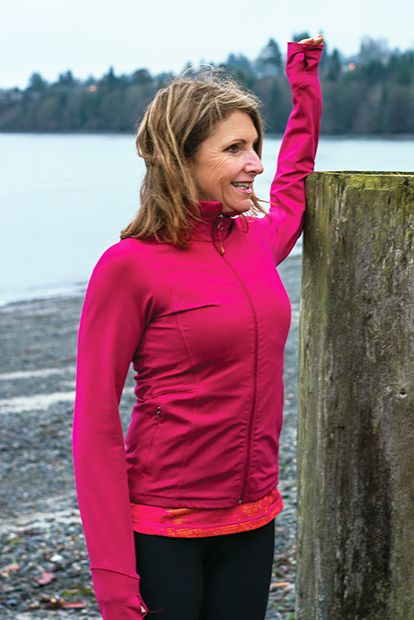
Exercise 6: Shoulder Roll and Hold
Standing in good Three-Point-Touch posture, roll your shoulders forward, skyward, back, and down as if you are etching a circle with them and trying to place your shoulder blades into your hip pockets. Hold that position and gently squeeze your shoulder blades together. Ensure that your arms are extended behind your body, thumbs facing towards your gluteals. Hold for ten seconds and release. Repeat 5 to 10 times.
This exercise can be performed as a rider warm-up when you’re warming up your horse.
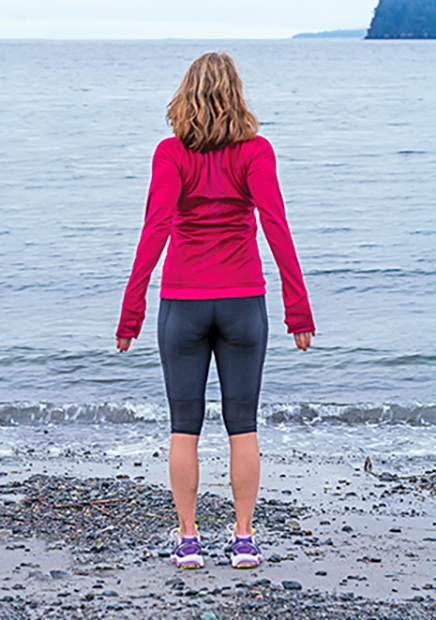
Exercise 7: Plank
Start by lying on the floor facing downward, with your hands under your shoulders and in Three-Point-Touch position with your abdominals engaged and your legs extended. Push yourself from the floor to a push-up position and hold. Ensure your shoulders are back and down. Remember to breathe. Keep your bottom from protruding toward the sky or letting your hips droop toward the floor. Maintain a stable body pose and hold for 3 to 60 seconds, then relax. Repeat 2 to 10 times. This exercise can also be done using an exercise ball as shown.
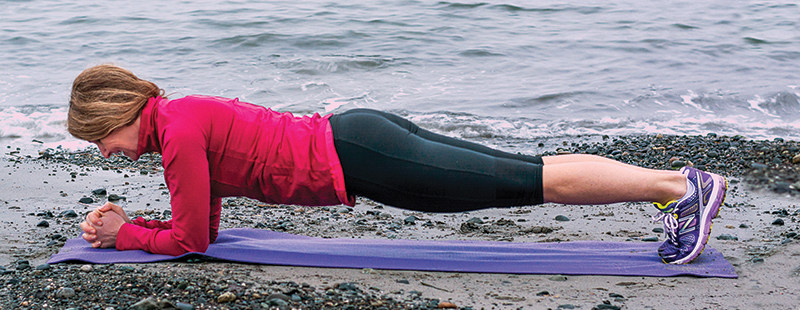
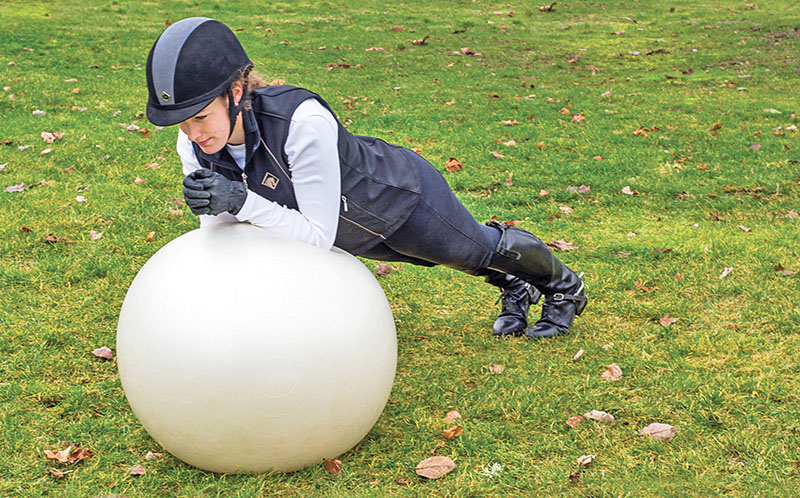
Exercise 8: Ball Chest Stretch
Roll your back down the ball so your head and neck are well supported and you are in neutral spine position with knees at 90 degrees over your ankles and hips parallel to the floor. Reach your arms out to the sides of your body to create a T-position and allow gravity to draw your arms toward the floor and expand your chest. Keep breathing! Hold this position for 30 to 60 seconds. Repeat a few times.
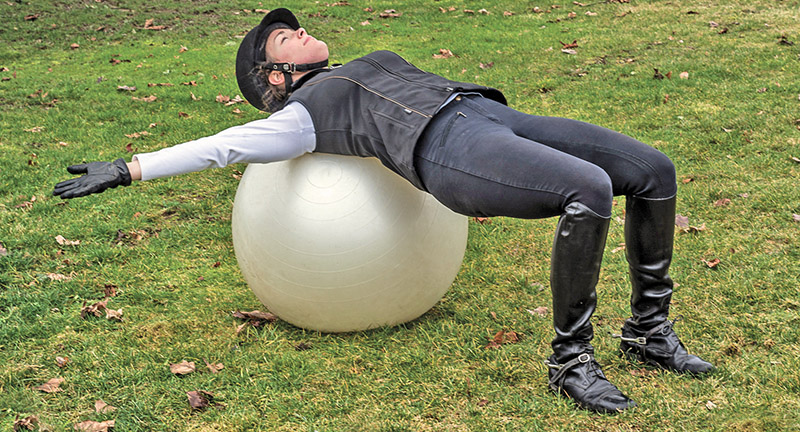
Three Point Touch
Begin by standing with your back against a wall, feet about hip-width apart. Ensure your balance is even between the front of your feet and your heels. Lift your arches slightly to put a bit of pressure on the outer parts of the feet. Your legs should be straight but do not lock your knees. From here, there are three points of contact which we will be working with:
- The back of your head
- Your upper back between your shoulder blade
- Your pelvis
Position your pelvis so your tailbone is pointing at the floor. Contract the front of your pelvis as if you were trying to stop the flow of urine, and pull your navel in toward your spine and up toward your sternum. Try to avoid tipping your pelvis by imagining it’s like a bowl of water. Keep the water level in the bowl. Lift your ribcage up out of your hips as if you were being picked up by your underarms. This will enable the back of your ribcage to lift also – an area that is too often overlooked yet plays an integral role in posture.

Broaden and lower your shoulders while keeping the lift in your torso. Place your shoulder blades against the back of your ribcage so your upper back can lay flat against the wall. It is important to avoid scrunching up your shoulders. With your arms straight under shoulders at your sides and palms facing forward, lengthen through the back of your neck as if the back of your head was being lifted like a marionette. This will also help you maintain the lift in your torso. Keep your chin parallel to the ground while gently drawing it in and touch the back of your head to the wall. Now you’ve achieved the Three-Point Touch!
Related: Ride with Balance, Flexibility and Strength
Exercise photos by Nancy Adams/Hooves Included Photography.
Illustrations by Elisa Crees/Canadian Horse Journal.



